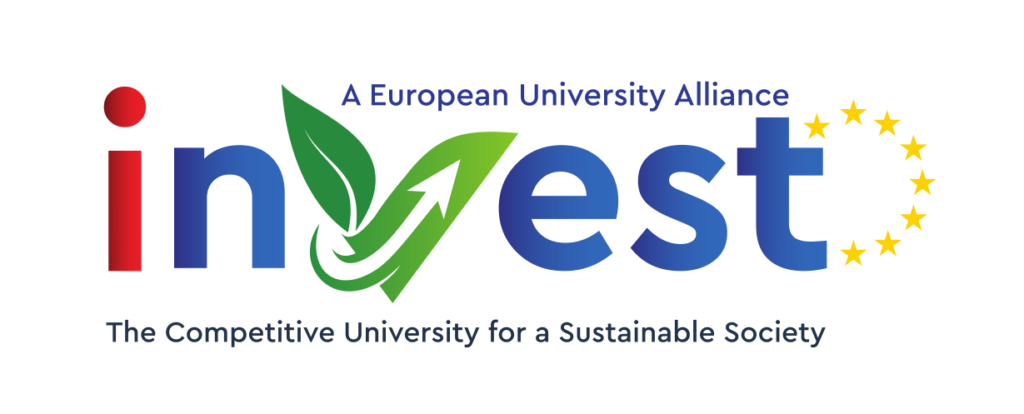Product-Market Fit and Marketing and Sales Funnel are closely related ideas. This article gives an introduction to both of these concepts.
6.4.2023
Heikki Immonen, Karelia University of Applied Sciences
A good Product-Market Fit is one of the three main goals a business needs to achieve to be successful. If the Product-Market Fit is poor, not enough people want to buy your product.
It also turns out that the Marketing and Sales activities should be guided by the understanding behind your Product-Market Fit. This also means that designing your Marketing and Sales Funnel becomes less challenging.
Do you have a good Product-Market Fit?
You have a good product-market fit, when you have enough returning customers. Returning customers are customers who have bought your product or service earlier, and want to buy it again. It means that your product is helping to satisfy their specific need or is solving their specific problem. It also means that the product stands out from the competition by having a unique benefit or a competitive advantage. And it means that they are willing to pay the price you are asking for. Finally, there are enough of these type of customers on your target market.
For example:
- McDonalds satisfies customer’s hunger (need) quickly (benefit) at an affordable price. Each restaurant is located in places where there is plenty of traffic and people.
Customer need you are targeting at
A need or a problem is the reason why a customer is spending effort or money for any product or service in the first place. The need can be very straightforward, a simple thing, or a very complicated and a complex bundle.
Examples of simple needs:
- Getting to a foreign location from home to attend a wedding as a guest (solution: flight tickets, train, car etc…)
- Feeling very thirsty (solution: drinking something like water, juice etc..)
Examples of more complex needs:
- Buying a Ferrari because of its value as a status symbol, and also as a means to move from one place to another
- Scrolling news online can satisfy the need of staying informed about important things, but it also produces immediate pleasure through the emotions generated by different news
It can be insightful to think that a product can satisfy a functional (practical), social, or a direct pleasure-seeking need.
A unique benefit
A unique benefit is the reason a customer selects your product and not the other competing products. This benefit can be, for example, related to:
- performance, meaning that your product solves the problem better or faster (for example: the current generation of solar panels are more efficient and effective than solar panels 20 years ago)
- reliability, your product solves the problem more reliably and it rarely fails (for example: in the 70s, Japanese cars were much more reliable than their American counterparts)
- simplicity, your product is easier, quicker, or simpler to use (for example: ChatGPT is faster than finding the answer by traditional means of online search and reading the contents of websites)
- accessibility, your product is more easily accessible than other products (for example: a store that is closer to your home than other stores)
- custom-fit, your product fits better and can be adapted to the unique situation or circumstances of your customer (for example: buying a suit from a tailor)
- cost, meaning that your product is cheaper and more affordable than the competitor’s (for example: IKEA was initially offering cheaper furniture than traditional furniture resellers)
The right price
Finally, when the price is not too high, the customer will select your product. In simpler terms, it means that the price you ask for matches the importance of the need your product is solving and the unique benefit you are offering. Note that in some cases, a higher price is a proof of the high value of the product.
The market consists of potential customers who have the need you are targeting and competition
Now we can define the market as representing the people or the organization who have the need you are targeting at and the competitors who are doing the same. You typically want to have some kind of geographical or other limiting factors that narrow your focus. Finally, there needs to be enough potential customers on that target market to have the size of business you need for profitability.
For example:
- The target market of hair-cutting needs of families living within a 3-kilometer distance from the hair-saloon. There are 2 other hair-saloons in the same area.
Next, we’ll look at the role of marketing and sales funnel in communicating about the product-market fit to potential customers, thus, helping them make a decision to buy.
Marketing and sales funnel is a process
A business consists of two main activities:
- Production of product or service,
- Marketing and sales.
Marketing and sales operations are commonly represented as a process that is titled “Marketing and sales funnel”. This process maps how a potential customer becomes aware of your product and finally ends up buying it. It is called a funnel, because there are typically many more people who become aware of your product than actually make a purchase.
For example:
- The marketing and sales funnel of an online store can consist of advertisements in a local newspaper, which motivate people to visit the store. Then some of these visitors make a purchase.
In every process there is something that gets transformed or changed. What is the thing that changes in the marketing and sales funnel process? The answer: potential customer’s likelihood to buy your product or service.
Let’s look at the main two stages of the marketing and sales funnel now.
Stage 1: Awareness and interest – channel and message
The first stage of the funnel has the marketing channel and the marketing message as its components. Channel is the media or the way the marketing message comes to the attention of potential customers. A marketing message received via the channel grabs a potential customer’s attention and sparks interest so that the potential customer wants to move on to the next stage.
For example:
- A Google Ad Words campaign uses the Google search as a channel, and the text in the ad as the message that encourages a person to visit the site (stage 2)
- A local newspaper can be the channel for a local supermarket to put ads on (message) that motivates (or reminds) people to go to the supermarket (stage 2)
- The physical visibility is a channel for an ice cream kiosk, while the appealing look and visuals are the message that invites people to walk closer and look at the kiosk and what it has to offer (stage 2)
If the motivation gets high enough, people move on to the next stage.
Stage 2: Objections and closing the sale – online store or sales meeting
In the 2nd stage of the marketing and sales funnel, the potential customer evaluates the product or service based on the information available and makes the purchase decision.
The marketing message sparked the potential customer’s interest enough to visit the online store or agree on a meeting, and now they want to know if the offer is too good to be true. That is why you should, at this stage, clear any doubts the customer might have and give them reasons to trust you (by showing testimonials, for example).
If everything, including the price, seems good, the customer decides to buy. Let’s look at some examples of the 2nd stage of the marketing and sales funnel:
- A landing page for a new book that has several testimonials and a readable sample chapter. A clear “Order now” button makes it easy to do the purchase.
- A physical design store, which a potential customer can enter and touch and look at the products. The shop owner gives additional information about the products and gives advice on the use of the products.
When the marketing and sales funnel brings you customers, you know that you have a good product-market fit.
About this article
The writing of this article was supported by the INnoVations of REgional Sustainability: European UniversiTy Alliance project. https://www.invest-alliance.eu/ . This project is funded by the Erasmus+ Program.
The content of this article represents the views of the author only and is his sole responsibility. The European Commission and the Agency do not accept any responsibility for use that may be made of the information it contains.
References
Anthony, S. D. (2014). The first mile: a launch manual for getting great ideas into the market. Harvard Business Review Press.
Christensen, C., Hall, T., Dillon, K., & Duncan, D. S. (2016). Competing against luck. The story of innovation and customer choice. First edition. New York, NY: Harper Business an imprint of HarperCollins Publishers.
Christensen, C., & Raynor, M. (2013). The innovator’s solution: Creating and sustaining successful growth. Harvard Business Review Press.
Fogg, B. J. (2009). A behavior model for persuasive design. In Proceedings of the 4th international Conference on Persuasive Technology.
Miller, D., & Peterson, J. J. (2020). Marketing made simple: A step-by-step storybrand guide for any business. Harpercollins Leadership.
Reis, E. (2011). The lean startup. New York: Crown Business
Sutherland, R. (2019). Alchemy: the dark art and curious science of creating magic in brands, business, and life. HarperCollins.
Ulwick, A. (2005). What customers want. New York. McGraw-Hill Professional Publishing.


